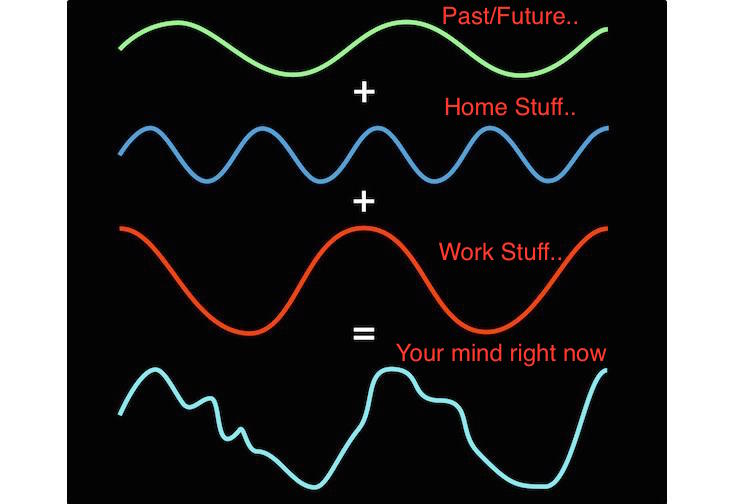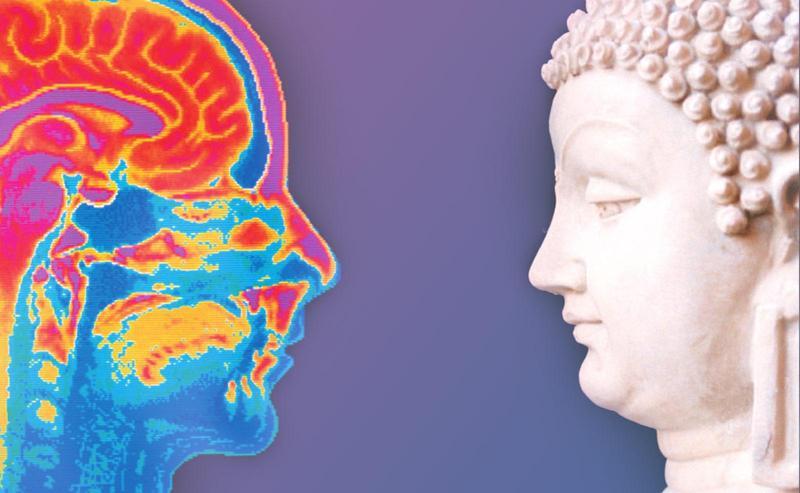The Math Behind Mindfulness, Meditation and Fighting Stress
The Math Behind Mindfulness, Meditation and Fighting Stress
The practice of mindfulness is becoming increasingly popular. It’s only a matter of time this becomes yet another billion dollar industry with some good products teaching us how to train your mind.
I have been practicing mindfulness for the last 7 years and the engineer in me has been searching for the science/math in it leaving out the spirituality part. I happen to read a great post on Hacker News explaining how Fourier Transform does it’s magic of identifying different notes/signals/waves in a single wave when you play a piano. Here, i will try to make a case that mindful meditation is the Fourier transform for your mind.
What is Fourier Transform
Quoting a gist from the great article explaining Fourier transform and how it powers MP3, JPEG compressions to MRI scans. The Fourier transform is like a mathematical prism — you feed in a wave and it spits out the ingredients of that wave—the notes (or sine waves) that when added together will reconstruct the wave.

Here, the final wave in light blue is actually three waves combined together. Fourier transform gives you this ability to find all the waves which produce this complex wave.
What goes on in your mind

An untrained mind at rest also looks like a complex wave with many overlapping waves powered by various emotions humans experience. This explains why sometimes we are not able to focus or articulate what exactly we are experiencing.
What can Mindful Meditation do
Before we understand how it works, let’s see what it can do. With enough practice it can help you do two things:
1. Understand what’s going on in your mind i.e. breaking your complex thought wave into the various thoughts/emotions you are experiencing at the moment.

2. With enough practice and training you can achieve these long pauses where you are in control of your thoughts/mind on demand. This has profound impacts on your ability to control/master your emotions, achieve long term attention and handle any anxiety/stress or fear head on which is related to your mental and physical well being.

How does Mindful Meditation help in getting those long Pauses
This practice teaches you to train your mind by focussing on the present using the most neutral thing in your body, your breadth. It’s based on the premise that all thoughts/emotions fall in a gradient of you experiencing happiness, excitement…disgust, sadness; the breadth is neutral. Slowly and with enough exercise you will be able to build your attention muscle to simply notice feelings as they come and go and bring back your wandering mind to the present by focussing on your breadth.
Managing Stress
As quoted from this article MRI scans show that after an eight-week course of mindfulness practice, the brain’s “fight or flight” center, the amygdala, appears to shrink. This primal region of the brain, associated with fear and emotion, is involved in the initiation of the body’s response to stress.
Mindfulness practice and expertise is associated with a decreased volume of grey matter in the amygdala (red), a key stress-responding region. (Image courtesy of Adrienne Taren). As the amygdala shrinks, the pre-frontal cortex – associated with higher order brain functions such as awareness, concentration and decision-making – becomes thicker.
The “functional connectivity” between these regions – i.e. how often they are activated together – also changes. The connection between the amygdala and the rest of the brain gets weaker, while the connections between areas associated with attention and concentration get stronger.
The scale of these changes correlate with the number of hours of meditation practice a person has done, says Adrienne Taren, a researcher studying mindfulness at the University of Pittsburgh.
“The picture we have is that mindfulness practice increases one’s ability to recruit higher order, pre-frontal cortex regions in order to down-regulate lower-order brain activity,” she says.
In other words, our more primal responses to stress seem to be superseded by more thoughtful ones.
Lots of activities can boost the size of various parts of the pre-frontal cortex – video games, for example – but it’s the disconnection of our mind from its “stress center” that seems to give rise to a range of physical as well as mental health benefits, says Taren.
How do i go about mindful meditation
First things first, you need to be ready to take this uphill ride, it’s harder than hitting the gym daily. If you have reached till here then i’d propose doing some reading and starting the daily practice.
The post has originally appeared on LinkedIn. Written by Inder Singh
Be the first to post a message!
